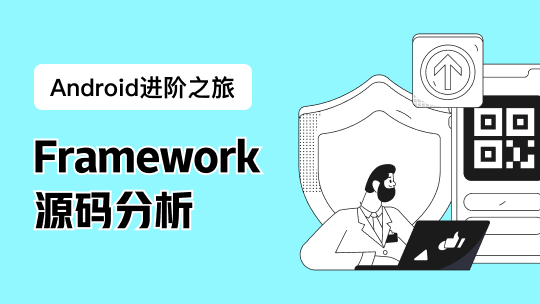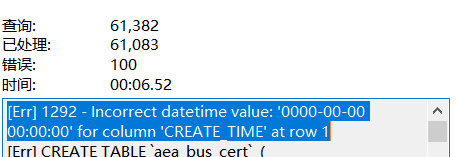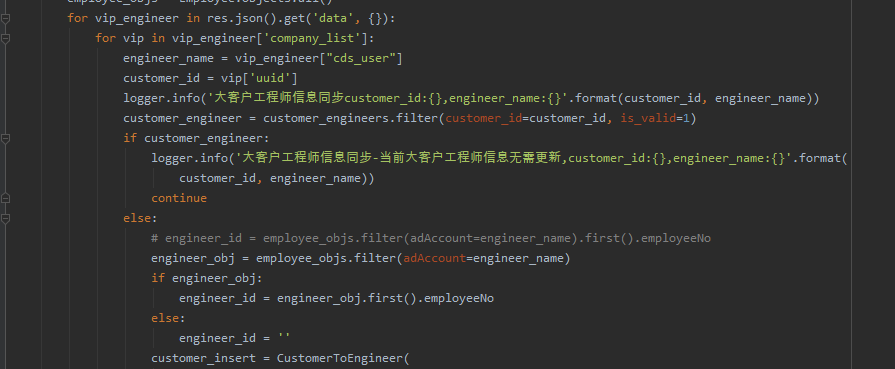本篇文章篇幅比较长,但是细看下去相信对学习Shiro应该会有帮助。好了,闲话不多说,直接进入正题:
Shiro提供了与Web集成的支持,其通过一个ShiroFilter入口来拦截需要安全控制的URL,然后进行相应的控制,ShiroFilter类似于如Strut2/SpringMVC这种web框架的前端控制器,其是安全控制的入口点,其负责读取配置(如ini配置文件),然后判断URL是否需要登录/权限等工作。
而要在Spring中使用Shiro的话,可在web.xml中配置一个DelegatingFilterProxy,DelegatingFilterProxy作用是自动到Spring容器查找名字为shiroFilter(filter-name)的bean并把所有Filter的操作委托给它。
首先是在web.xml中配置DelegatingFilterProxy
<filter>
<filter-name>shiroFilter</filter-name>
<filter-class>org.springframework.web.filter.DelegatingFilterProxy</filter-class>
<init-param>
<param-name>targetFilterLifecycle</param-name>
<param-value>true</param-value>
</init-param>
</filter>
<filter-mapping>
<filter-name>shiroFilter</filter-name>
<url-pattern>/*</url-pattern>
</filter-mapping>
配置好DelegatingFilterProxy后,下面只要再把ShiroFilter配置到Spring容器(此处为Spring的配置文件)即可:
<bean id="shiroFilter" class="org.apache.shiro.spring.web.ShiroFilterFactoryBean">
<property name="securityManager" ref="securityManager"/>
</bean>
可以看到我们使用了ShiroFilterFactoryBean来创建shiroFilter,这里用到了Spring中一种特殊的Bean——FactoryBean。当需要得到名为”shiroFilter“的bean时,会调用其getObject()来获取实例。下面我们通过分析ShiroFilterFactoryBean创建实例的过程来探究Shiro是如何实现安全拦截的:
public Object getObject() throws Exception {
if (instance == null) {
instance = createInstance();
}
return instance;
}
其中调用了createInstance()来创建实例:
protected AbstractShiroFilter createInstance() throws Exception {
// 这里是通过FactoryBean注入的SecurityManager(必须)
SecurityManager securityManager = getSecurityManager();
if (securityManager == null) {
String msg = "SecurityManager property must be set.";
throw new BeanInitializationException(msg);
}
if (!(securityManager instanceof WebSecurityManager)) {
String msg = "The security manager does not implement the WebSecurityManager interface.";
throw new BeanInitializationException(msg);
}
FilterChainManager manager = createFilterChainManager();
PathMatchingFilterChainResolver chainResolver = new PathMatchingFilterChainResolver();
chainResolver.setFilterChainManager(manager);
return new SpringShiroFilter((WebSecurityManager) securityManager, chainResolver);
}
可以看到创建SpringShiroFilter时用到了两个组件:SecurityManager和ChainResolver。
SecurityManager:我们知道其在Shiro中的地位,类似于一个“安全大管家”,相当于SpringMVC中的DispatcherServlet或者Struts2中的FilterDispatcher,是Shiro的心脏,所有具体的交互都通过SecurityManager进行控制,它管理着所有Subject、且负责进行认证和授权、及会话、缓存的管理。ChainResolver:Filter链解析器,用来解析出该次请求需要执行的Filter链。PathMatchingFilterChainResolver:ChainResolver的实现类,其中还包含了两个重要组件FilterChainManager、PatternMatcherFilterChainManager:管理着Filter和Filter链,配合PathMatchingFilterChainResolver解析出Filter链PatternMatcher:用来进行请求路径匹配,默认为Ant风格的路径匹配
先有一个大体的了解,那么对于源码分析会有不少帮助。下面会对以上两个重要的组件进行分析,包括PathMatchingFilterChainResolver和FilterChainManager。首先贴一段ShiroFilter的在配置文件中的定义:
<!-- Shiro的Web过滤器 -->
<bean id="shiroFilter" class="org.apache.shiro.spring.web.ShiroFilterFactoryBean">
<property name="securityManager" ref="securityManager" />
<property name="loginUrl" value="/login" />
<property name="unauthorizedUrl" value="/special/unauthorized" />
<property name="filters">
<util:map>
<entry key="authc" value-ref="formAuthenticationFilter" />
<entry key="logout" value-ref="logoutFilter" />
<entry key="ssl" value-ref="sslFilter"></entry>
</util:map>
</property>
<property name="filterChainDefinitions">
<value>
/resources/** = anon
/plugin/** = anon
/download/** = anon
/special/unauthorized = anon
/register = anon
/login = ssl,authc
/logout = logout
/admin/** = roles[admin]
/** = user
</value>
</property>
</bean>
再来看看PathMatchingFilterChainResolver和FilterChainManager的创建过程:
protected FilterChainManager createFilterChainManager() {
// 默认使用的FilterChainManager是DefaultFilterChainManager
DefaultFilterChainManager manager = new DefaultFilterChainManager();
// DefaultFilterChainManager默认会注册的filters(后面会列出)
Map<String, Filter> defaultFilters = manager.getFilters();
// 将ShiroFilterFactoryBean配置的一些公共属性(上面配置的loginUrl,successUrl,unauthorizeUrl)应用到默认注册的filter上去
for (Filter filter : defaultFilters.values()) {
applyGlobalPropertiesIfNecessary(filter);
}
// 处理自定义的filter(上面配置的filters属性),步骤类似上面
Map<String, Filter> filters = getFilters();
if (!CollectionUtils.isEmpty(filters)) {
for (Map.Entry<String, Filter> entry : filters.entrySet()) {
String name = entry.getKey();
Filter filter = entry.getValue();
applyGlobalPropertiesIfNecessary(filter);
if (filter instanceof Nameable) {
((Nameable) filter).setName(name);
}
// 将Filter添加到manager中去,可以看到对于Filter的管理是依赖于FilterChainManager的
manager.addFilter(name, filter, false);
}
}
// 根据FilterChainDefinition的配置来构建Filter链(上面配置的filterChainDefinitions属性)
Map<String, String> chains = getFilterChainDefinitionMap();
if (!CollectionUtils.isEmpty(chains)) {
for (Map.Entry<String, String> entry : chains.entrySet()) {
String url = entry.getKey();
String chainDefinition = entry.getValue();
// 后面会分析该步的源码,功能上就是创建Filter链
manager.createChain(url, chainDefinition);
}
}
return manager;
}
下面有必要来看看DefaultFilterChainManager的源码,分析一下上面调用到的方法。先来看看他的几个重要的属性:
private FilterConfig filterConfig;
private Map<String, Filter> filters; //pool of filters available for creating chains
private Map<String, NamedFilterList> filterChains; //key: chain name, value: chain
其中filterConfig仅在初始化Filter时有效,而我们自定义的Filter都不是init的,所以该属性可以暂时忽略()。
而后面两张map就重要了:filters中缓存了所有添加的filter,filterChains则缓存了所有的filterChain。其中前者的key是filter name,value是Filter。而后者的key是chain name,value是NamedFilterList。
有的童鞋可能会问NamedFilterList是怎么样的结构呢,你可以把它当成List<Filter>,这样就好理解了吧。下面再分析刚才createFilterChainManager()中调用过的manager的几个方法:
addFilter(缓存filter让manager来管理)
public void addFilter(String name, Filter filter, boolean init) { addFilter(name, filter, init, true); } protected void addFilter(String name, Filter filter, boolean init, boolean overwrite) { Filter existing = getFilter(name); if (existing == null || overwrite) { if (filter instanceof Nameable) { ((Nameable) filter).setName(name); } if (init) { initFilter(filter); } this.filters.put(name, filter); } }将
filter缓存到filters这张map里,不管是默认注册的还是自定义的都需要FilterChainManager来统一管理。createChain:创建filterChain并将定义的filter都加进去
// chainName就是拦截路径"/resources/**",chainDefinition就是多个过滤器名的字符串 public void createChain(String chainName, String chainDefinition) { if (!StringUtils.hasText(chainName)) { throw new NullPointerException("chainName cannot be null or empty."); } if (!StringUtils.hasText(chainDefinition)) { throw new NullPointerException("chainDefinition cannot be null or empty."); } if (log.isDebugEnabled()) { log.debug("Creating chain [" + chainName + "] from String definition [" + chainDefinition + "]"); } // 先分离出配置的各个filter,比如 // "authc, roles[admin,user], perms[file:edit]" 分离后的结果是: // { "authc", "roles[admin,user]", "perms[file:edit]" } String[] filterTokens = splitChainDefinition(chainDefinition); // 进一步分离出"[]"内的内容,其中nameConfigPair是一个长度为2的数组 // 比如 roles[admin,user] 经过解析后的nameConfigPair 为{"roles", "admin,user"} for (String token : filterTokens) { String[] nameConfigPair = toNameConfigPair(token); // 得到了 拦截路径、filter以及可能的"[]"中的值,那么执行addToChain addToChain(chainName, nameConfigPair[0], nameConfigPair[1]); } }至此,
FilterChainManager就创建完了,它无非就是缓存了两张map,没有什么逻辑上的操作。下面将FilterChainManager设置到PathMatchingFilterChainResolver中。PathMatchingFilterChainResolver实现了FilterChainResolver接口,该接口中只定义了一个方法:FilterChain getChain(ServletRequest request, ServletResponse response, FilterChain originalChain);通过解析请求来得到一个新的
FilterChain。而PathMatchingFilterChainResolver实现了该接口,依靠了FilterChainManager中保存的chainFilters和filters这两张map来根据请求路径解析出相应的filterChain,并且和originalChain组合起来使用。下面具体看看PathMatchingFilterChainResolver中的实现:public FilterChain getChain(ServletRequest request, ServletResponse response, FilterChain originalChain) { // 得到 FilterChainManager FilterChainManager filterChainManager = getFilterChainManager(); if (!filterChainManager.hasChains()) { return null; } String requestURI = getPathWithinApplication(request); // chainNames就是刚定义的filterChains的keySet,也就是所有的路径集合(比如:["/resources/**","/login"]) for (String pathPattern : filterChainManager.getChainNames()) { // 请求路径是否匹配某个 定义好的路径: if (pathMatches(pathPattern, requestURI)) { if (log.isTraceEnabled()) { log.trace("Matched path pattern [" + pathPattern + "] for requestURI [" + requestURI + "]. " + "Utilizing corresponding filter chain..."); } // 找到第一个匹配的Filter链,那么就返回一个ProxiedFilterChain return filterChainManager.proxy(originalChain, pathPattern); } } return null; }这里返回只有两种情况,要么是
null,要么就是一个ProxiedFilterChain。返回null并不表示中断FilterChain,而是只用originChain。而关于ProxiedFilterChain,它实现了FilterChain,内部维护了两份FilterChain(其实一个是FilterChain,另一个是List<Filter>)
FilterChain也就是web.xml中注册的Filter形成的FilterChain,我们称之为originChain。而另一个List<Filter>则是我们在Shiro中注册的Filter链了,下面看看ProxiedFilterChain中关于doFilter(...)的实现:public void doFilter(ServletRequest request, ServletResponse response) throws IOException, ServletException { if (this.filters == null || this.filters.size() == this.index) { //we've reached the end of the wrapped chain, so invoke the original one: if (log.isTraceEnabled()) { log.trace("Invoking original filter chain."); } this.orig.doFilter(request, response); } else { if (log.isTraceEnabled()) { log.trace("Invoking wrapped filter at index [" + this.index + "]"); } this.filters.get(this.index++).doFilter(request, response, this); } }可以看到,它会先执行Shiro中执行的
filter,然后再执行web.xml中的Filter。不过要注意的是,需要等到originChain执行到ShiroFilter之后才会执行Shiro中的Filter链。
至此,两个组件的创建过程差不多都介绍完了,那么当这两个组件创建完毕后,是如何工作的呢?
先从ShiroFilter入手,因为它是总的拦截器,看看其中的doFilterInternal(...)方法:protected void doFilterInternal(ServletRequest servletRequest, ServletResponse servletResponse, final FilterChain chain) throws ServletException, IOException { Throwable t = null; try { final ServletRequest request = prepareServletRequest(servletRequest, servletResponse, chain); final ServletResponse response = prepareServletResponse(request, servletResponse, chain); final Subject subject = createSubject(request, response); //noinspection unchecked subject.execute(new Callable() { public Object call() throws Exception { // 其实需要关心的就在这里 // touch一下session updateSessionLastAccessTime(request, response); // 执行Filter链 executeChain(request, response, chain); return null; } }); } catch (ExecutionException ex) { t = ex.getCause(); } catch (Throwable throwable) { t = throwable; } if (t != null) { if (t instanceof ServletException) { throw (ServletException) t; } if (t instanceof IOException) { throw (IOException) t; } //otherwise it's not one of the two exceptions expected by the filter method signature - wrap it in one: String msg = "Filtered request failed."; throw new ServletException(msg, t); } }跟进
executeChain(...)方法:protected void executeChain(ServletRequest request, ServletResponse response, FilterChain origChain) throws IOException, ServletException { FilterChain chain = getExecutionChain(request, response, origChain); chain.doFilter(request, response); }如何得到
FilterChain的呢?如果你认真的看到这里,那么你应该不难想到其中肯定利用了刚才注册的ChainResolver:protected FilterChain getExecutionChain(ServletRequest request, ServletResponse response, FilterChain origChain) { FilterChain chain = origChain; FilterChainResolver resolver = getFilterChainResolver(); if (resolver == null) { log.debug("No FilterChainResolver configured. Returning original FilterChain."); return origChain; } FilterChain resolved = resolver.getChain(request, response, origChain); if (resolved != null) { log.trace("Resolved a configured FilterChain for the current request."); chain = resolved; } else { log.trace("No FilterChain configured for the current request. Using the default."); } return chain; }猜对了~并且也验证了当
resolver.getChain(...)返回null时,直接使用originChain了。然后执行返回的FilterChain的doFilter(...)方法。这个过程我们再脱离代码来分析一下:当我们从浏览器发出一个请求,究竟发生了什么?
这里只站在Filter的层面来分析。服务器启动后,读取web.xml中的filter、filter-mapping节点后组成FilterChain,对请求进行拦截。拦截的顺序按照filter节点的定义顺序,Shiro利用ShiroFilter来充当一个总的拦截器来分发所有需要被Shiro拦截的请求,所以我们看到在Shiro中我们还可以自定义拦截器。ShiroFilter根据它在拦截器中的位置,只要执行到了那么就会暂时中断原FilterChain的执行,先执行Shiro中定义的Filter,最后再执行原FilterChian。可以打个比方,比如说本来有一条铁链,一直蚂蚁从铁链的开端往末端爬,其中某一环叫ShiroFilter,那么当蚂蚁爬到ShiroFilter这一环时,将铁链打断,并且接上另一端铁链(Shiro中自定义的Filter),这样就构成了一条新的铁链。然后蚂蚁继续爬行(后续的执行过程)。到这里,我们已经根据请求路径找到了一条
Filter链(originChain+shiroChain),之后就是对链上的Filter做doFilter,其中关于如何
就是filter后配置的[]部分是如何生效的,我们可以看PathMatchingFilter中的Prehandle(...)方法:protected boolean preHandle(ServletRequest request, ServletResponse response) throws Exception { if (this.appliedPaths == null || this.appliedPaths.isEmpty()) { if (log.isTraceEnabled()) { log.trace("appliedPaths property is null or empty. This Filter will passthrough immediately."); } return true; } // appliedPaths中保存了该filter中能拦截的路径和该路径配置的key-value对,比如{key="/admin/**", value="[admin]"} for (String path : this.appliedPaths.keySet()) { // 首先是匹配路径 if (pathsMatch(path, request)) { log.trace("Current requestURI matches pattern '{}'. Determining filter chain execution...", path); // 然后开始验证“[]”中的字符串 Object config = this.appliedPaths.get(path); return isFilterChainContinued(request, response, path, config); } } //no path matched, allow the request to go through: return true; }下面跟踪
isFilterChainContinued(...):private boolean isFilterChainContinued(ServletRequest request, ServletResponse response, String path, Object pathConfig) throws Exception { if (isEnabled(request, response, path, pathConfig)) { //isEnabled check added in 1.2 if (log.isTraceEnabled()) { // log } return onPreHandle(request, response, pathConfig); } if (log.isTraceEnabled()) { // log } return true; }基本也就是交给
onPreHandle(...)来处理,所以一般需要验证”[]“中字符串的filter都会扩展这个方法,比如AccessControlFilter:public boolean onPreHandle(ServletRequest request, ServletResponse response, Object mappedValue) throws Exception { return isAccessAllowed(request, response, mappedValue) || onAccessDenied(request, response, mappedValue); }而
RolesAuthorizationFilter中:public boolean isAccessAllowed(ServletRequest request, ServletResponse response, Object mappedValue) throws IOException { Subject subject = getSubject(request, response); String[] rolesArray = (String[]) mappedValue; if (rolesArray == null || rolesArray.length == 0) { //no roles specified, so nothing to check - allow access. return true; } Set<String> roles = CollectionUtils.asSet(rolesArray); return subject.hasAllRoles(roles); }最后附上默认注册的
filters:public enum DefaultFilter { anon(AnonymousFilter.class), authc(FormAuthenticationFilter.class), authcBasic(BasicHttpAuthenticationFilter.class), logout(LogoutFilter.class), noSessionCreation(NoSessionCreationFilter.class), perms(PermissionsAuthorizationFilter.class), port(PortFilter.class), rest(HttpMethodPermissionFilter.class), roles(RolesAuthorizationFilter.class), ssl(SslFilter.class), user(UserFilter.class); }














